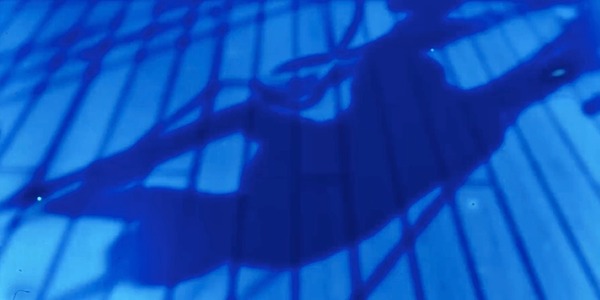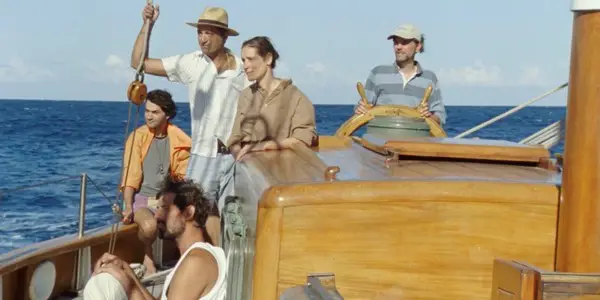HUMAN FLOWERS OF FLESH: Let The Current Carry You

Soham Gadre is a writer/filmmaker in the Washington D.C. area.…
Looking at Human Flowers of Flesh and Helena Wittman’s previous feature Drift (2017), it’s easy to claim that there is a fascination with water. I would go further and state that what’s really operating in nearly every facet of her films is the fascination with water’s movement, specifically the sea or ocean. The tidal currents and the cycles they go through conjoined with the phases of the moon create a consistent acceleration and recession in intensity. Wittman’s films are criticized for their languid nature but like the encroachment of the tide, it takes some patience before things start to hit you and start to let the film’s movements operate and carry you back and forth with them.
Art of Anti-Action
Human Flowers of Flesh is visually challenging but can the test patience of viewers not willing to give up on its distinct choices of anti-action. Its camera forces the viewer to accept the subtleties of what is “not happening” on camera in relation to what’s happening off camera. Early on in the movie there is a strong conversation happening at a dock party but the camera is affixed to Ida (Angeliki Popoulia), the film’s central character, silent and observing the party.

We’re trained to expect action-reaction, a symbolic cut to signify what her eyes are looking at, where her ears are perked up too. Instead, we don’t move from her. We sense the muffled voices of an off-the-frame conversation, and we sense people walking around, but it’s through Ida that we have to sense what is important and what is not. Her head does a very familiar tilt and smile and immediately we expect she sees someone she knows. A second later, her head starts following the person and then his hand comes into the frame and touches her shoulder.
Familiar Rhythms
Likewise, once Ida boards a boat of the French Legion, the people, and frames become subsumed by the movement of the water. Each part of the boat dips and rises with the waves, the rope swings with a familiar rhythm, and every cabin room has the horizon out the window bobbing up and down.

Shadows in particular become a fascinating part of the imagery in the movie, not only because of silhouettes moving back and forth but as extensions of the human characters at the whims of nature – the sea and also the sun. Ida being the film’s central character becomes almost a moot point as the movie extends to create a narrative out of the rhythms of what surrounds her.
Conclusion:
It’s can be hard to get into a movie like this because it feels like you’re lost out at sea until its rhythms become more familiar to you. But once Wittman’s Human Flowers of Flesh takes hold and the patterns of its warm and cool frames, consistently move with the currents of natural surroundings, it becomes clear what the film is. Whether one accepts these choices and lets them take you adrift or you’re clamoring to stay on solid ground is your choice. I was ultimately hypnotized and found it an inventive and enchanting movie about the sea.
Human Flowers of Flesh was released in theaters in the United States on April 14th, 2023.
Watch Human Flowers of Flesh
Does content like this matter to you?
Become a Member and support film journalism. Unlock access to all of Film Inquiry`s great articles. Join a community of like-minded readers who are passionate about cinema - get access to our private members Network, give back to independent filmmakers, and more.
Soham Gadre is a writer/filmmaker in the Washington D.C. area. He has written for Hyperallergic, MUBI Notebook, Popula, Vague Visages, and Bustle among others. He also works full-time for an environmental non-profit and is a screener for the Environmental Film Festival. Outside of film, he is a Chicago Bulls fan and frequenter of gastropubs.













